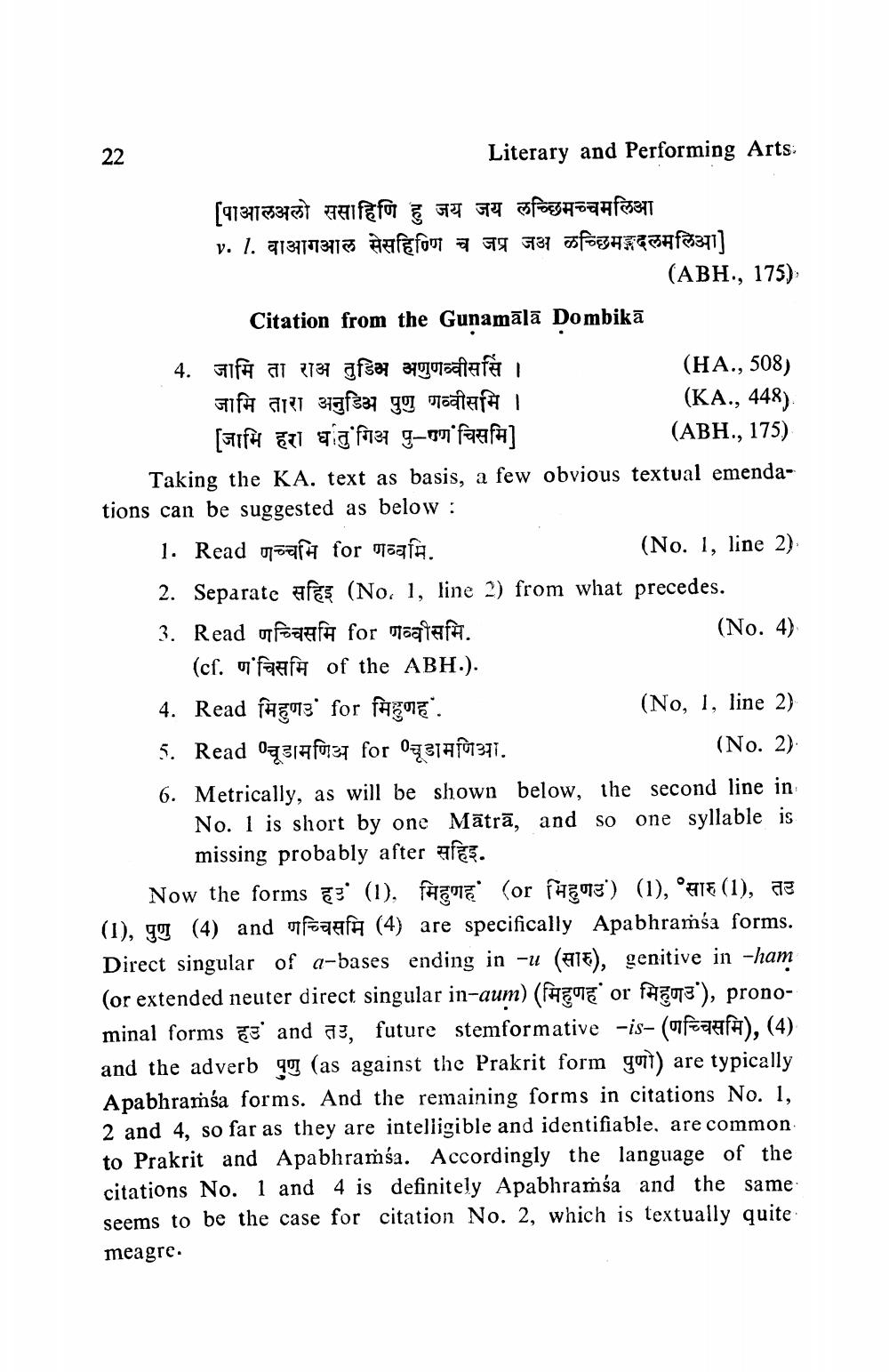________________
22
Literary and Performing Arts:
[पाआलअलो ससाहिणि हु जय जय लच्छिमच्चमलिआ v. 1. वाआगआल सेसहिणि च जप्र जअ लच्छिमङ्गदलमलिआ]
(ABH., 175), Citation from the Gunamālā Dombikā 4. जामि ता राअ तुडिअ अणुणव्वीससि ।
(HA., 508) जामि तारा अनुडिअ पुणु णव्वीसमि ।
(KA., 448). [जामि हरा धातु गिअ पु-एण चिसमि]
(ABH., 175) Taking the KA. text as basis, a few obvious textual emendations can be suggested as below: 1. Read णच्चमि for णव्वमि.
(No. 1, line 2) 2. Separate सहिइ (No. 1, line 2) from what precedes. 3. Read ofsaafh for maatalh.
(No. 4) (cf. णचिसमि of the ABH.). 4. Read मिहुण for मिहुणह.
(No, 1, line 2) 5. Read चूडामणिअ for 0चूडामणिआ.
___(No. 2) 6. Metrically, as will be shown below, the second line in
No. 1 is short by one Mātrā, and so one syllable is
missing probably after सहिइ. Now the forms ह (1), मिहुणह (or मिहुण) (1), °सारु (1), तर (1), पुणु (4) and णच्चिसमि (4) are specifically Apabhramsa forms. Direct singular of a-bases ending in -u (सारु), genitive in -ham (or extended neuter direct singular in-aum) (मिहुणह or मिहुणउ), pronominal forms हउ and तउ, future stemformative -is- (पच्चिसमि), (4) and the adverb qu (as against the Prakrit form gori) are typically Apabhramsa forms. And the remaining forms in citations No. 1, 2 and 4, so far as they are intelligible and identifiable, are common to Prakrit and Apabhramśa. Accordingly the language of the citations No. 1 and 4 is definitely Apabhramsa and the same seems to be the case for citation No. 2, which is textually quite meagre.




